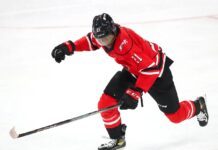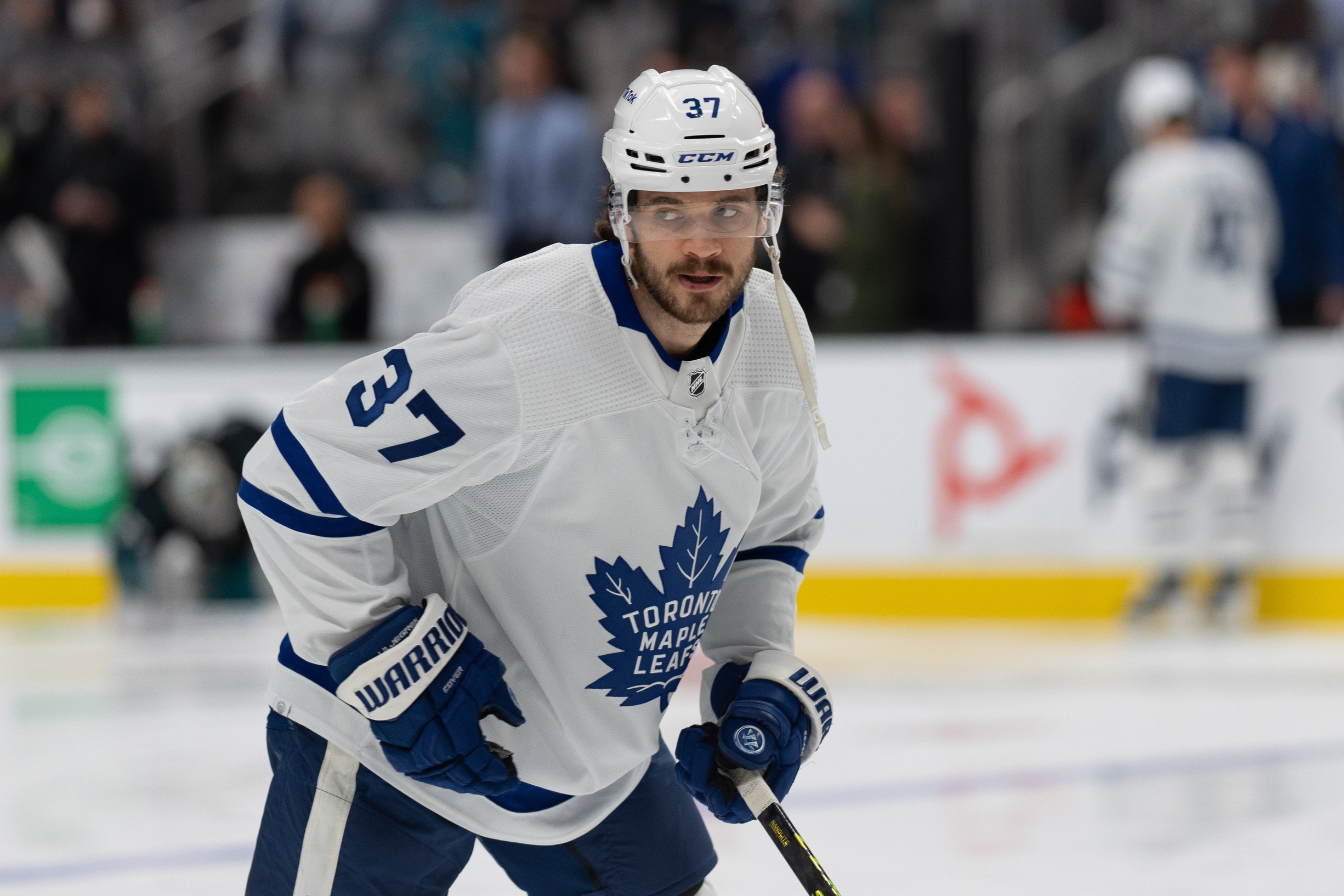The Maple Leafs have taken care of their first piece of RFA business this offseason by locking up Timothy Liljegren for two seasons at a $1.4 million AAV.
The bridge contract will take Liljegren through his age 23 and age 24 seasons and leave him as an arbitration-eligible RFA in 2024 at the age of 25.
Prior to this season, the point was often made by GM Kyle Dubas and head coach Sheldon Keefe that Liljegren’s upside as a fledgling defenseman might’ve been viewed in a much different light had he taken a development path through the CHL, college, or the SHL route instead of crossing over to the AHL as an 18-year-old and spending over three years developing in Toronto. Combine that with the fact that he was once billed as a potential top-five pick who fell to the Leafs in the bottom half of the first round of the 2017 draft, and many in the market were lukewarm on Liljegren’s NHL prospects if not writing them off altogether.
Liljegren rewrote the narrative this season by very much establishing himself as part of the Leafs’ future on the blue line. After Leafs brass made an intentional effort last offseason to keep the door open for Liljegren to take the step as a full-time NHLer following multiple seasons of all-situations development on the farm, the Swede grabbed the opportunity with both hands for the most part. He appeared in 61 games, played 16:24 a game, and posted the best underlying numbers on the team in the categories of shot attempt percentage, shot share, and expected goal percentage.
Liljegren’s on-ice results, particularly strong on a bottom pairing with fellow young Swede Rasmus Sandin, come with the major caveat of softer usage that included plenty of shared ice time with Auston Matthews and Mitch Marner, but the Leafs outscored the opposition 57-42 with Liljegren on the ice this past season, which led the team in terms of goals for percentage at five-on-five. He also played a secondary role on the penalty kill at 1:06/game.
Timothy Liljegren - With and Without Matthews & Marner
| TOI | CF% | GF% | xGF% | |
|---|---|---|---|---|
| with Matthews & Marner | 2h 40m 9s | 67.8% | 74% | 76.6% |
| without Matthews & Marner | 9h 27m 54s | 51.8% | 52% | 52.8% |
There were predictable speed bumps in his learning curve on the defensive side of the puck at times this season; there were a few rough nights with some standout giveaways and mistakes defending around his net when Liljegren was on a pairing with Morgan Rielly while tasked with tougher matchup situations. He also lost his playoff lineup spot in favour of Justin Holl and the more experienced deadline addition in Ilya Lybushkin, who the coaching staff trusted more defensively as a partner next to Rielly.
That said, such growing pains are not surprising for a rookie defenseman, and the numbers still look more than solid when Liljegren shared the ice with Rielly: 65% share of the actual goals (15-8) to go along with a 63% share of the expected goals. He also played some of his best hockey down the stretch of the regular season next to veteran deadline addition Mark Giordano, which is a credible pairing option (at just $2.15 million combined) for Sheldon Keefe and Dean Chynoweth heading into the new season.
Liljegren’s ability to defend the rush, move the puck, and get himself involved offensively were all encouraging developments. He gained confidence on the offensive side of the puck quite quickly, showing off an underrated shot, good instincts in the offensive zone, a knack for getting pucks through into productive areas from the blue line, and an ability to pick his spots on when to jump up and get involved in the rush offense.
Liljegren’s production was something of an underrated revelation, as he tallied five goals and 23 points in 61 games, with all but one goal and one assist coming at even strength. That’s enough for the rookie to rank second on the Leafs defense behind Morgan Rielly in points per 60 at five-on-five and 17th in the NHL among defensemen with a minimum of 500 minutes played this past season. From a secondary scoring point of view, that’s particularly notable on a Leafs team that did not have any other defensemen inside the top 75 in the category.
The question of whether the Leafs could’ve squeezed more term out of this contract on a higher but reasonable AAV is worth pondering, but there was not much margin to get too aggressive on the AAV with the upper limit of the cap only moving up to $82.5 million and the Leafs facing some big question marks both in net and in the depth areas of their forward group. The signing leaves the Leafs with just $7-8 million in cap space without a number-one goaltender signed and decisions to make on RFAs Rasmus Sandin, Pierre Engvall, and Ondrej Kase. There is some potential added flexibility depending on what the Leafs decide to do with Petr Mrazek and his $3.8 million cap hit (offload at the cost of a trade sweetener, buy out, or keep him and attempt to hire a new goalie coach who can work with him).
I would have liked to pay up a bit now and lock in Liljegren to a long-term deal but when you are penny pinching, a bridge deal on a small AAV is more than fine.
— Anthony Petrielli (@APetrielli) June 27, 2022
The right side of the Leafs’ defense corps is currently comprised of TJ Brodie, Justin Holl, and Liljegren among those under contract. We will see if the Leafs make anything more than some depth moves on the blue line this season — it’s worth noting Lyubushkin finished the season as Rielly’s partner and is currently a pending UFA — but especially with Holl taking a step back in 2021-22, there could be more opportunity for Liljegren to grow into this upcoming season.
Young, productive right-shot defensemen capable of regular NHL duties are not easy assets to come by, and Liljegren at $1.4 million is a good bet to provide a strong bang-for-the-buck for the next two seasons.

































